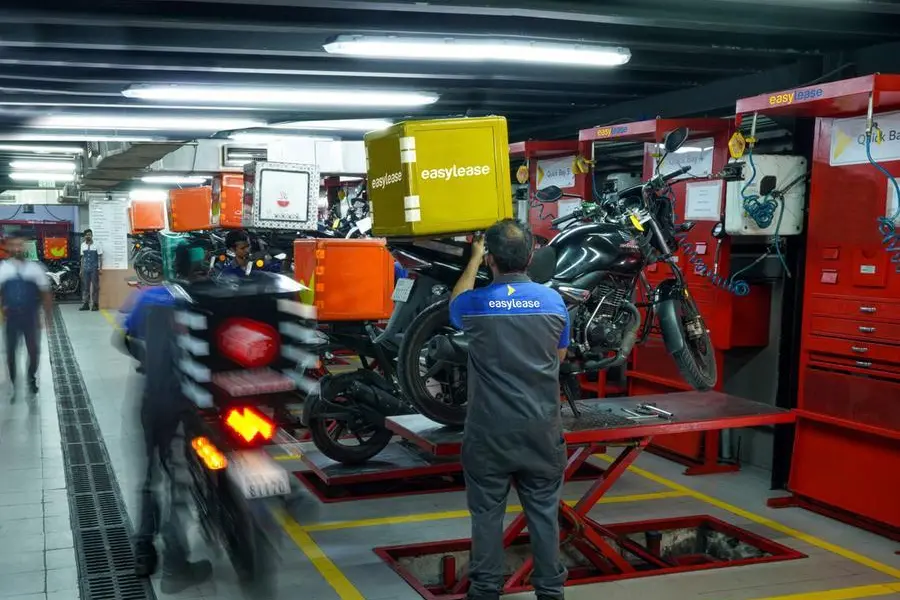PHOTO
As a health worker in South Sudan, Night Stella Elias sees from year to year how rising temperatures are adding to the dangers faced by pregnant women and their babies.
Armed conflict, drought, widespread poverty and scarce rural health services already mean the world's newest country has one of its highest maternal mortality rates. Heatwaves linked to climate change are increasing the risks.
"Pregnant mothers who live in deep rural areas have limited access to medical services. Saving their lives when they have heat stroke inflicted by climate change becomes very difficult," Elias told the Thomson Reuters Foundation by phone from Jonglei state in the east.
During heatwaves, pregnant women are at higher risk of miscarriage, stillbirth or of having a low-weight baby, said Elias, nutrition coordinator at African aid agency ForAfrika.
For every 1 degree Celsius (1.8F) in temperature rise, the number of stillbirths and premature deliveries increases by about 5%, according to an analysis of 70 studies conducted since the mid-1990s and published in the British Medical Journal in 2020.
That is of particular concern in Africa, which is heating up more quickly than the rest of the planet and facing more severe climate disasters such as droughts, a joint U.N.-African Union report said in September.
Policymakers are starting to address the issue as awareness gradually grows about the threat posed by climate change to human health, climate researchers said.
For the first time, the annual U.N. climate summit - COP28, starting in late November in Dubai - will have a day dedicated to health.
Last year, a flagship report from the U.N.'s Intergovernmental Panel on Climate Change (IPCC) mentioned maternal health, marking a crucial turning point, said University of Washington professor Kristie L. Ebi.
"Climate change started off as an environmental issue. It's been a slow process to get people to understand that climate change is also affecting health and wellbeing," said Ebi, who co-authored a section on human health in the IPCC report.
"There's a lot more that needs to be done ... but it's now coming to the attention of policymakers," she added.
PREVENTABLE DEATHS
Concrete policies to tackle the issue must be implemented more quickly in order to save lives, said Angela Baschieri from the U.N.'s sexual and reproductive health agency, UNFPA.
An UNFPA report published on Tuesday showed only 23 out of 119 signatories of the 2015 Paris Agreement on climate change mentioned newborn and maternal health in their latest national climate plan, known officially as a Nationally Determined Contribution (NDC).
Although there are 196 Paris signatories, only 119 have submitted an NDC since 2020.
South Sudan, and other poorer nations including Cambodia and Sri Lanka in Asia and Ivory Coast in Africa, were among those that did reference maternal health.
"Very few countries recognised that climate change had an impact and very few specifically said the health system needed to be strengthened to deliver programmes for women," said Baschieri, who co-authored the UNFPA report with researchers at Queen Mary University of London.
Progress in reducing maternal and newborn deaths has stalled since 2015, with more than 4.5 million mothers and babies dying every year mostly in sub-Saharan Africa and Central and Southern Asia, according to a World Health Organization (WHO) May report.
"Maternal death is generally preventable. But the impact is not just on the mother ... the child will have long-term consequences. And now climate is bringing a different dimension to the equation," Baschieri said.
LIVES AT RISK
Heatwaves are breaking records around the world and the continued release of planet-heating emissions will push global temperatures into uncharted territory, scientists have said.
According to the WHO, rising temperatures, extreme weather, air pollution, and less secure water and food supplies not only lead to deaths but also exacerbate infectious diseases, provoke heat-related illnesses, and harm pregnant women.
In South Sudan, food shortages driven by climate-related drought and other weather shocks can also lead to problematic health conditions such as malnutrition or anaemia during pregnancy, Elias said.
Nearly 7.8 million South Sudanese - two-thirds of the population - face severe food shortages due to floods, drought and conflicts, the U.N. humanitarian agency UNOCHA says.
Among them, 738,000 pregnant and breastfeeding women are malnourished, according to the U.N. agency.
TOO HOT FOR PREGNANCY?
While reducing workloads and keeping cool can help reduce the impacts, many pregnant working women in poor, climate-vulnerable countries have little choice but to carry on working through scorching heat, charities and researchers say.
In Cambodia, where women workers account for 85% of the garment industry workforce and 75% of agricultural labourers according to the World Bank, aid groups say better working conditions are needed to protect pregnant women from the heat.
"We are moving towards hotter and hotter periods," said Grana Pu Selvi, who oversees nutrition programmes at World Vision International in Cambodia.
"When there is an increase in temperature ... it is important to prioritise safer workplaces in the factories or on farms for pregnant women," she added.
Staying hydrated, having early warning systems that include pregnant women, and ensuring midwives provide heat-specific antenatal guidance are ways to mitigate the risks, said Sari Kovats from the London School of Hygiene and Tropical Medicine.
But "there is only so much that raising awareness can do" when many women are grappling with stark socioeconomic inequalities, lack of cooling and poor health systems, said Kovats, an associate professor of climate and public health.
About 1.2 billion rural and urban poor people globally are expected to be living without cooling solutions by 2030, according to Sustainable Energy for All (SEforALL), a U.N.-backed organisation working on energy access.
Practical measures like investing in more health centres so women do not have to walk for miles in the heat for antenatal checkups, or planting more trees for shade and cooling at clinics can also help, Kovats said.
"For some women who are exposed to heat and living in hot homes, it's because they just don't have access to cooling," she said.
"Changing guidance isn't going to be enough. You can present that to them, but in terms of the day-to-day reality of these women, what are people going to do?"
(Reporting by Lin Taylor @linnytayls in London; Editing by Helen Popper)























